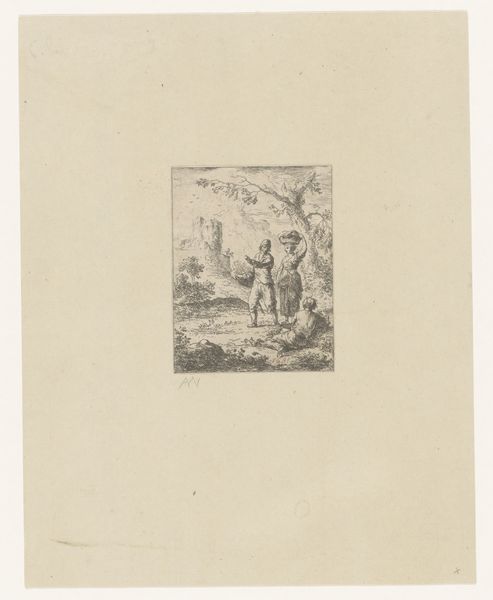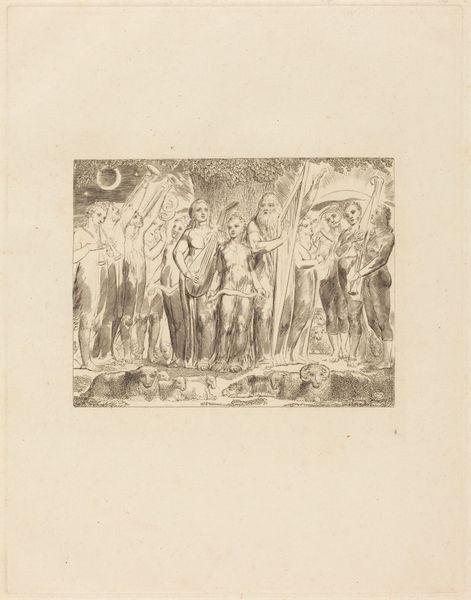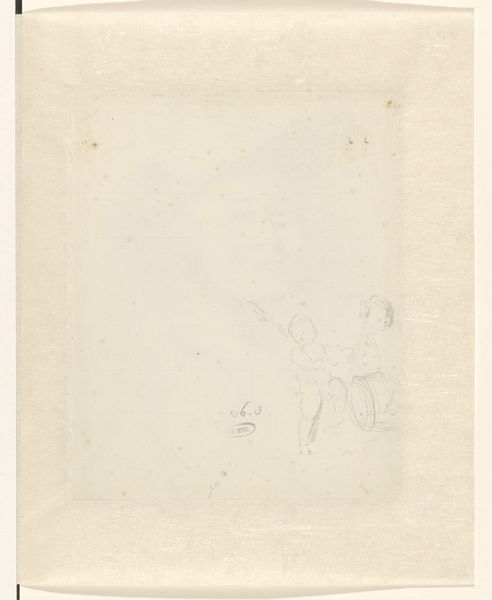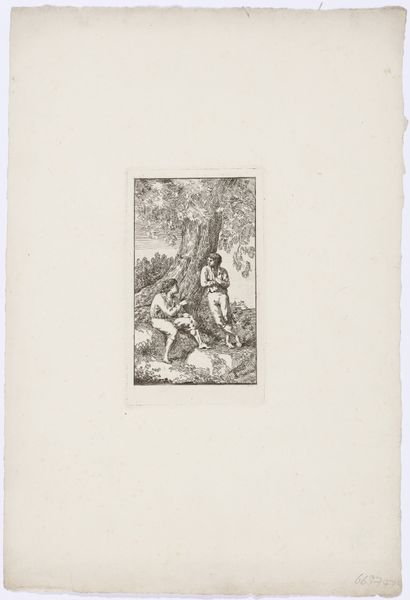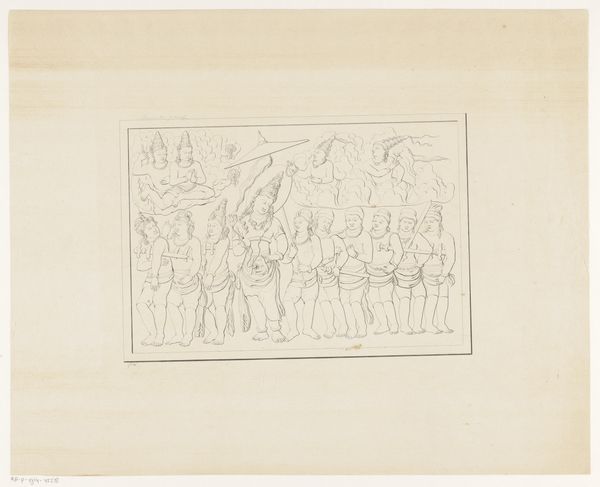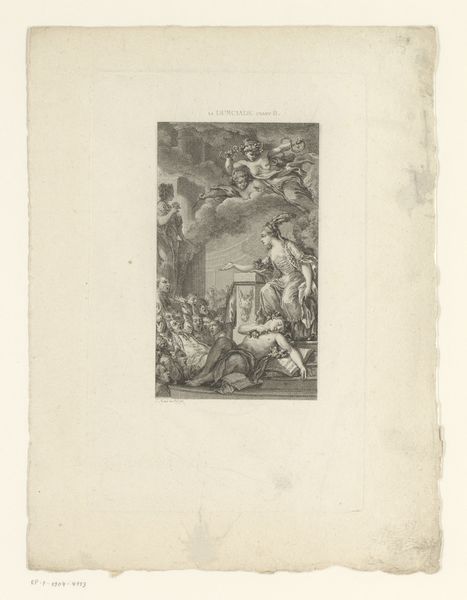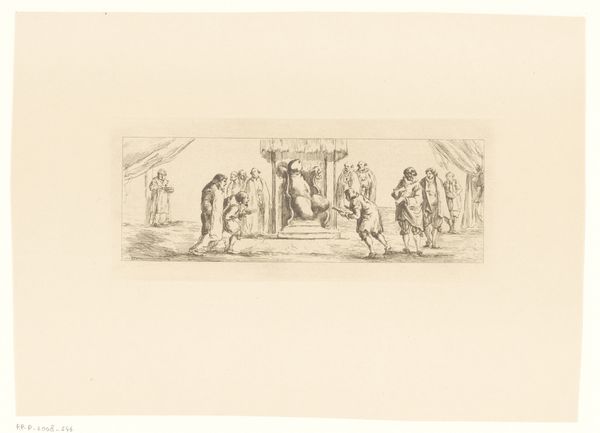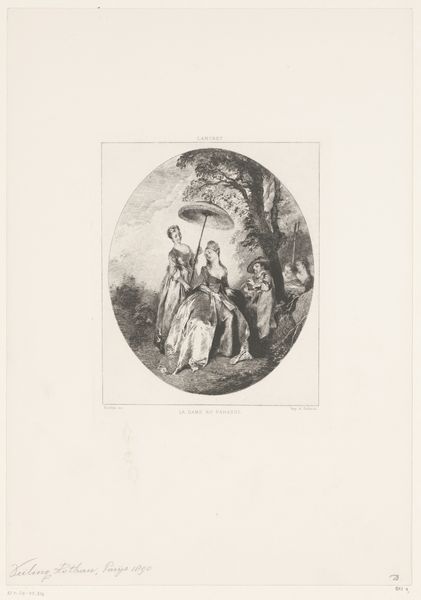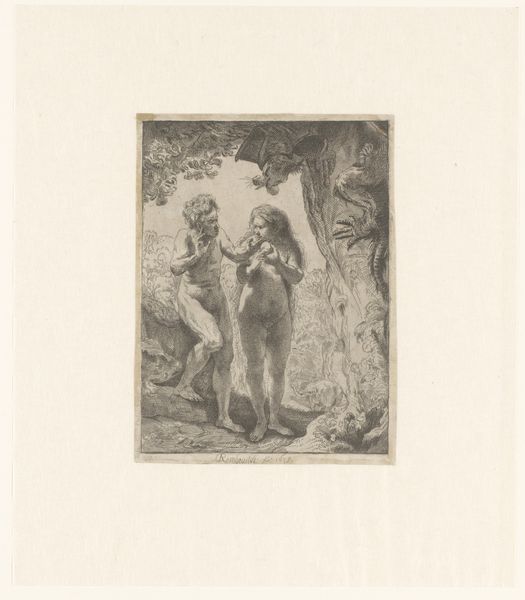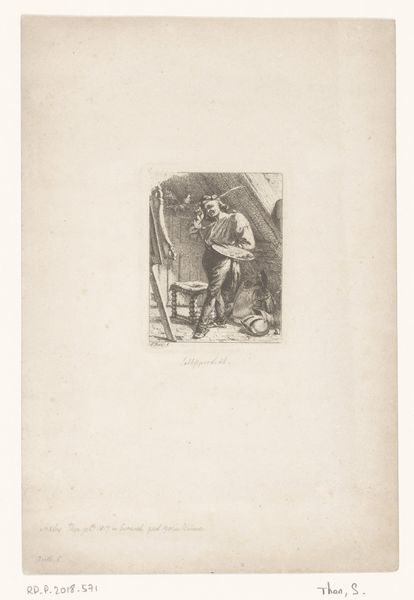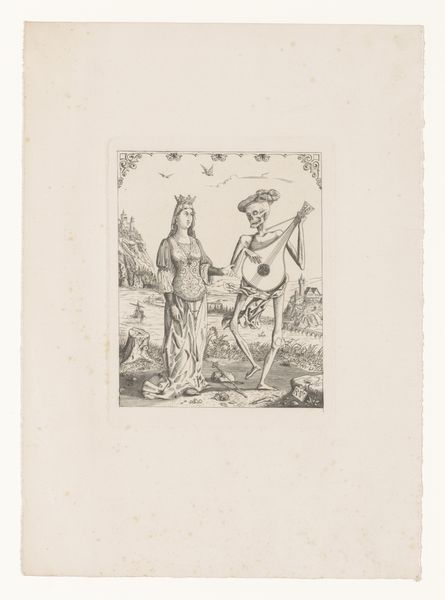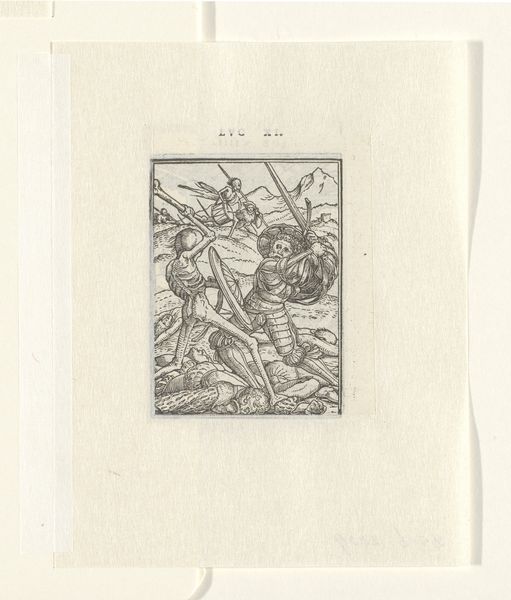
drawing, print, etching, intaglio, engraving
#
drawing
#
narrative-art
# print
#
etching
#
intaglio
#
etching
#
figuration
#
engraving
Dimensions: height mm, width mm
Copyright: Rijks Museum: Open Domain
Curator: Welcome. Before us is an intriguing etching from somewhere between 1842 and 1900 by Wilhelmus Petrus van Geldorp, entitled "Duivel en dansende figuren" which translates to "Devil and dancing figures." It's rendered in engraving and etching, part of the intaglio print family. Editor: Whoa, my first thought? Total chaos, but in a meticulously rendered, almost polite way. Like a Victorian nightmare sketched on a doily. I love the looseness in the drawing; feels very alive and raw, even within that rigid, almost academic line-work. It feels like madness contained... or trying to be. Curator: That's perceptive. The print reflects the 19th-century fascination with the demonic, often used to critique social hypocrisy. The figures are locked in a perpetual dance with this devil, a visual metaphor for moral compromise perhaps? Geldorp likely engaged with broader anxieties of the period. Editor: Exactly! This is total dance macabre energy. Are they willingly dancing? Is he controlling them? The expressions are... intense, to say the least. And you can see a kind of playful malevolence in the devil's face, as he’s sort of orchestrating this debauched circus! But also, everyone’s weirdly kind of graceful, even with the hinted struggle, makes me wonder about a personal crisis reflected in this drawing. Curator: That’s a strong reading of this visual world. Perhaps, the “dance” could represent not only compromise, but the very theatricality of power, or how those in charge are nothing more than another "puppet master" controlling others. This kind of art often spoke truth to power through symbolism during the 19th century. Editor: Okay, I see that! What's fascinating to me is how contemporary this feels; swap the costumes for suits, and the devil for a tech bro and you've basically got our world in a nutshell! So in the end it reveals a great capacity to reveal human flaws from different centuries through art. Curator: Yes. "Duivel en dansende figuren," remains relevant by holding a mirror to society. Editor: An eternally grooving, somewhat terrifying, and very perceptive mirror. A dark carnival for the ages.
Comments
No comments
Be the first to comment and join the conversation on the ultimate creative platform.
